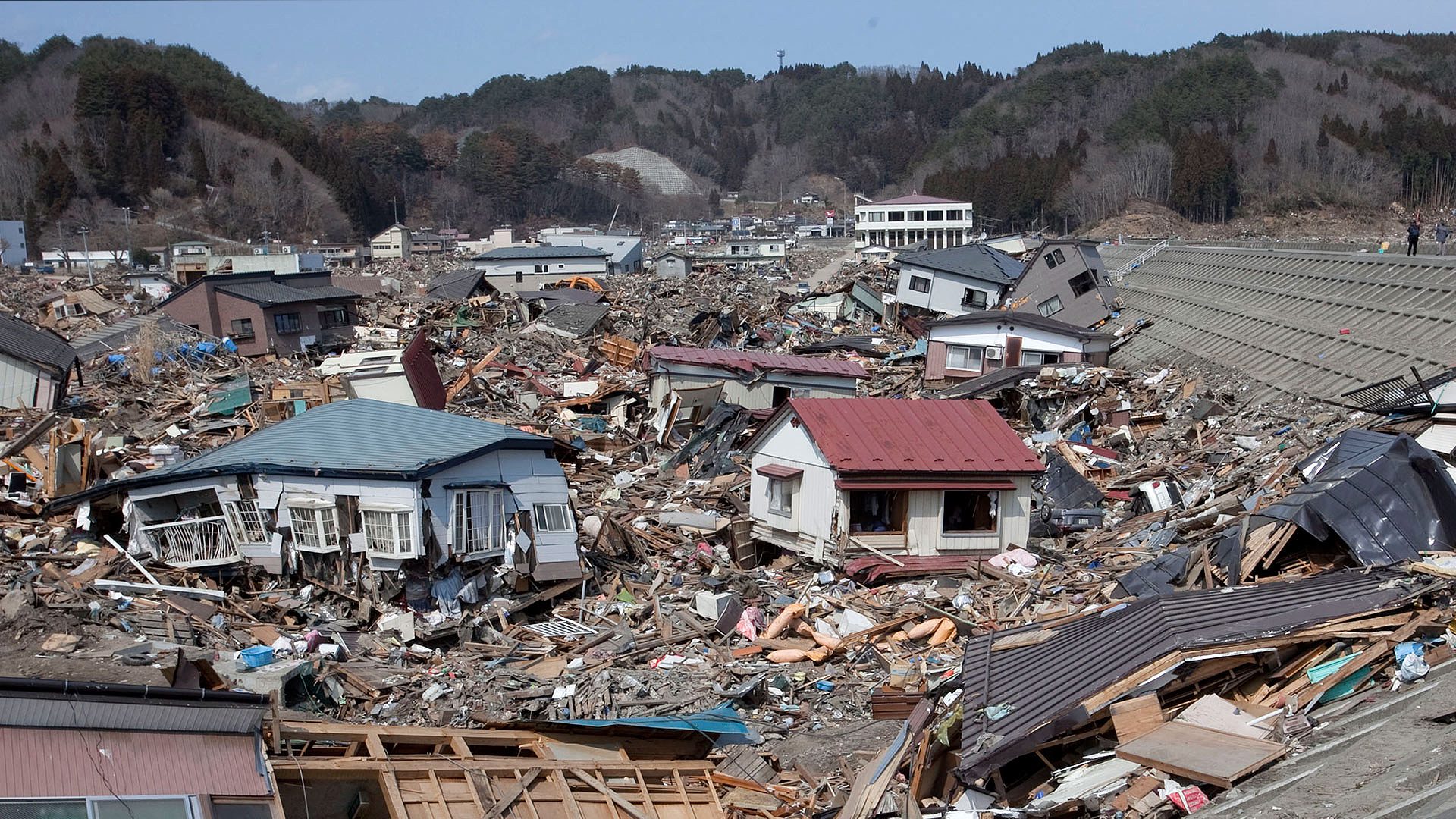GET TO HIGH GROUND
A tsunami is a series of enormous ocean waves caused by earthquakes, underwater landslides, volcanic eruptions, or asteroids, and can kill or injure people and damage or destroy buildings and infrastructure as waves come in and go out.
PREPARE NOW
-
If you live near or visit a coastal area, learn about the tsunami risk. Some at-risk communities have maps with evacuation zones and routes. If you are a visitor, ask about community emergency plans.
-
Learn the signs of a potential tsunami, such as an earthquake, a loud roar from the ocean, or unusual ocean behavior, such as a sudden rise or wall of water or sudden draining showing the ocean floor.
-
Know and practice community evacuation plans and map out your routes from home, work, and play.
-
Pick shelters 100 feet or more above sea level or at least one mile inland.
-
Create a family emergency communication plan that has an out-of-state contact. Plan where to meet if you get separated.
-
Sign up for your community’s warning system. The Emergency Alert System (EAS) and National Oceanic and Atmospheric Administration (NOAA) Weather Radio also provide emergency alerts.
SURVIVE DURING
-
If you are in a tsunami area and there is an earthquake, first protect yourself from the earthquake.
-
Drop, Cover, and Hold On. Drop to your hands and knees. Cover your head and neck with your arms. Hold on to any sturdy furniture until the shaking stops. Crawl only if you can reach better cover, but do not go through an area with more debris.
-
When the shaking stops, if there is a warning, either natural signs or an official warning, move immediately to a safe place as high and as far inland as possible. Listen to the authorities, but do not wait for tsunami warnings and evacuation orders.
-
If you are outside of the tsunami hazard zone and receive a warning, stay where you are unless officials tell you otherwise.
-
Leave immediately if you are told to do so. Evacuation routes are often marked by a wave with an arrow in the direction of higher ground.
-
If you are in the water, grab onto something that floats, such as a raft, tree trunk, or door.
-
If you are in a boat, face the direction of the waves and head out to sea. If you are in a harbor, go inland.
BE SAFE AFTER
- Listen to local alerts and authorities for information on areas to avoid and shelter locations.
- Avoid wading in floodwater, which can contain dangerous debris. Water may be deeper than it appears.
- Be aware of the risk of electrocution. Underground or downed power lines can electrically charge water. Do not touch electrical equipment if it is wet or if you are standing in water.
- Stay away from damaged buildings, roads, and bridges.
- Save phone calls for emergencies. Phone systems are often down or busy after a disaster.
- Use text messages or social media to communicate with family and friends.
FOR ALL EMERGENCIES: CORAC runs a HAM radio net and Signal groups. If communication goes out for any length of time, meet outside your local Church at 9 a.m. on Saturday mornings if it is safe to do so. Tell friends at Church now in case you can’t then. CORAC teams will be out looking for people to gather in and work with.






















0 Comments